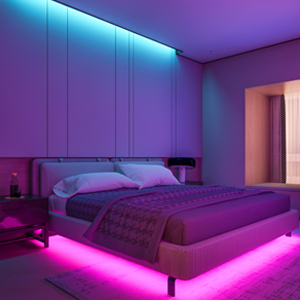We love some great LED flickering as much as anyone else however following quite a while of LED soldering we want something cooler to get us invigorated. Sure there are RGB LEDs and those are fun as well yet what comes after that? Indeed, we have the response: LED Strips! These are adaptable circuit sheets with a full variety of LEDs patched on. They take a ton of LED wiring drudgery out of enlivening a room, vehicle, bike, ensemble, and so forth. The ones we convey are additionally waterproof. Always go to website for more information to find the uses and all other specifications of LED at each brand, so that you can get some idea to choose a light also by knowing this you can able to differentiate the brands based on its specifications.

There are two essential sorts of LED strips, the “simple” kind, and the “computerized” kind. Simple sort strips have every one of the LEDs associated equally thus it behaves as one enormous tricolor LED; you can set the whole strip to any variety you need, however, you have no control over the singular LED’s tones. They are incredibly simple to utilize and genuinely economical. The Digital-type strips work another way. They have a chip for each LED, to utilize the strip you need to send carefully coded information to the chips. Notwithstanding, this implies you have some control over each LED separately! Due to the additional intricacy of the chip, they are more costly.
Current Draw
Since there are three LEDs in series, you can’t drive these LEDs from a 5V stock. The LED strips say “+12V” on them to stamp the anode and that is the greatest voltage we propose. We’ve viewed that as assuming you’re good with them being a little dimmer, even 9VDC functions admirably. Each portion of 3 LEDs draws roughly 20 million Amperes from a 12V stockpile, per series of LEDs. Once more, that is expecting you would have every one of the LEDs on immediately and that you are driving it from 12V. Assuming you will be PWM-blurring between colors, perhaps 1/2 of that is the thing you’ll draw. In any case, you truly do have to have a genuinely good power supply to run this strip, that multitude of LEDs adds up!
Use
Since these LED strips are exceptionally basic, we can undoubtedly utilize them with any microcontroller. We recommend utilizing PWM darkening methods to control the strip. Since each ‘Drove’ pin might wind up requiring an Amp or more to sink to the ground, power semiconductors are required! Try not to attempt to interface the pins straightforwardly to your regular microcontroller, they will wear out and additionally not work.
You can utilize any power NPN or N-Channel MOSFET, to ensure the semiconductor is appraised to have the option to pass as the need might arise. For instance, since we draw around 0.2Amps per channel per meter, if you have a 5-meter strip you should miss 1 Ampere for every semiconductor. Get the meaty “TO-220” bundles, not the tiny little men.

